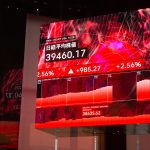
- Critical Minerals
- Defense Industry
- Rare Earths
West Scrambles to Counter China’s Rare Earth Grip
7 minute read

Western nations launch critical minerals projects to counter China’s 90% control of rare earth processing capabilities
Key Takeaways
- China controls 66% of critical mineral production and 90% of rare earth refining, creating significant strategic vulnerabilities for Western defense and clean energy sectors as demand surges from AI and green transition needs.
- U.S. mine development takes 29 years on average, the second longest globally, while new refining facilities require 10-20 years to become operational, highlighting the scale of infrastructure challenges facing domestic supply chain efforts.
- Barclays expands coverage to 60 listed companies focused on substitution, exploration, and recycling, adding mining equipment providers Epiroc and Sandvik as Western governments accelerate domestic production initiatives.
Introduction
Western governments are accelerating efforts to break China’s stranglehold on critical mineral supply chains as geopolitical tensions intensify and demand from artificial intelligence and defense sectors surges. China currently dominates global refining for essential materials including lithium, cobalt, nickel, and rare earth elements, controlling approximately 66% of production or refining for major critical minerals and over 90% for rare earths.
This dominance grants Beijing significant leverage over global supply chains, particularly as the world transitions to cleaner energy and advanced technologies. Recent Chinese export controls on processed rare earth elements, issued in response to U.S. tariffs, underscore the strategic vulnerability facing Western economies dependent on Chinese-controlled refining operations.
Key Developments
The competition over critical minerals has intensified over the past five years, becoming a focal point of great-power rivalry between the United States and China. These strategic materials are vital for producing advanced technologies underpinning green economies, defense industries, artificial intelligence, and quantum computing.
China’s control extends beyond raw material extraction to encompass the entire supply chain. The country maintains fully integrated operations from extraction to refining, smelting, and manufacturing, making it far cheaper and more efficient to process minerals domestically than in competing nations. Even minerals mined outside China are often sent to Chinese-owned processing plants for refinement.
Western governments are employing three primary strategies to reduce dependence: substitution, domestic production, and recycling. The U.S. military’s heavy reliance on these minerals for defense applications adds urgency to supply chain diversification efforts. Gallium-arsenide chips power electronic warfare systems, neodymium-iron-boron magnets are critical to F-35 flight control systems, and antimony is essential for ammunition production.
Market Impact
According to Investing.com, analysts at Barclays highlighted these supply chain developments in a Thursday note, emphasizing how powering AI and bolstering defense are boosting demand for critical raw materials. The investment bank has updated its critical minerals company landscape to include approximately 60 listed companies focusing on substitution, exploration, or recycling.
Financial markets and manufacturers closely monitor policy shifts and investment incentives, as these developments will shape the competitive landscape for electric vehicles, renewables, and semiconductors for years to come. Copper and nickel emerge as key materials due to their substitutability for other critical raw materials, with rising interest in next-generation alternatives.
Investors remain hesitant to fund U.S. refining and processing facilities due to uncertain returns, shifting federal policies, and high capital expenditures. The mining and processing sectors appear less attractive compared to technology sectors that require minimal upfront investment and offer higher returns.
Strategic Insights
The structural challenges facing Western supply chain diversification efforts are substantial. Domestic refining expansion remains slow, with new processing plants and smelters requiring 10-20 years to become operational. The Mountain Pass Rare Earth Mine, which reopened after China’s 2010 export controls, still sent 98% of its raw materials to China in 2019 due to lack of U.S. processing capacity.
Deep-sea mining emerges as a thematic wildcard, while recycling efforts increasingly focus on rare earth metals amid a lag in electric vehicle battery recycling. The tech industry is developing new battery chemistries and rare-earth-free magnets to reduce reliance on Chinese-dominated supply chains.
Canada’s abundant mineral resources and integrated supply chains with the U.S. position it as a potentially pivotal partner in mitigating Chinese dominance. The countries’ collaborative initiatives under a Joint Action Plan on Critical Minerals demonstrate the friendshoring approach to supply chain security.
Expert Opinions and Data
Barclays analysts emphasize that “although China is the key player in CRM mining and refining, we see Europe and the US adopting initiatives to strengthen domestic CRM chains.” The investment bank notes that “copper and nickel emerge as key materials due to their CRM substitutability,” while “Europe and the US fast track local mining projects, benefiting mining equipment companies.”
China’s dominance is particularly pronounced in midstream segments, with the country refining 73% of the world’s cobalt, 59% of lithium, and 68% of nickel. Pascale Massot notes that despite de-risking efforts, substantial change is unlikely without strategic recalibration, emphasizing that some commodities may be unsuitable for domestic stockpiling.
The U.S. is expanding strategic stockpiles as part of a broader “defensive resilience” strategy that includes urban mining and trade source diversification. However, building new mines and refining facilities requires significant investment, with permitting and regulatory hurdles contributing to the lengthy development timelines.
Conclusion
The race to secure critical mineral supply chains represents one of the most significant strategic challenges facing Western economies today. While China’s near-monopoly creates substantial vulnerabilities, the slow pace of domestic infrastructure development and high capital requirements present formidable obstacles to rapid diversification.
The Biden administration’s focus on friendshoring offers a collaborative framework for securing critical mineral sources through alliances with like-minded democracies. However, achieving true mineral independence requires sustained industrial policy commitment, regulatory reform, and unprecedented levels of public-private cooperation to build the refining capabilities necessary for strategic autonomy.








